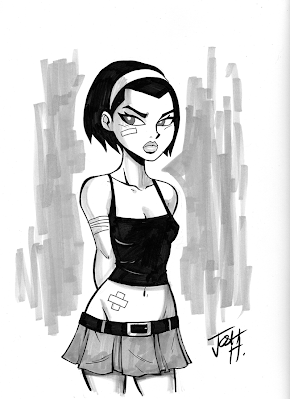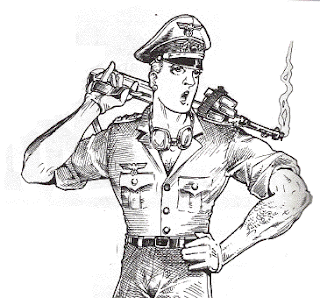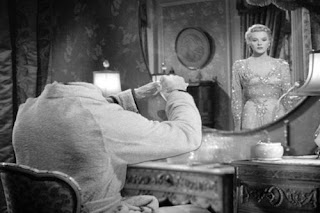Writer: Andi Watson
Art: Josh Howard
Rating: Seven of Ten Stars
After teenaged goth chick Lottie is busted trying to get into a night club using a fake ID, her parents send out of London to spend summer with her grandparents. Here, she gets a little variety in her life--learns about golfing and fishing, manages to win a cake decorating contest, and discovers that it is possible to survive without a cellphone--and learns that friends and possible romance can be found in places she never thought to look. She also becomes involved in a solving a mystery when a woman is murdered on her grandparents' golf courseher to spend the summer with her grandparents in the country... and her grandfather appears to be the most likely suspect.

"Clubbing" was one of the inaugural entries in the "Minx" line of graphic novels. These are books targeted at young teenage girls, and, as such, I am about as far away from being the target audience as possible.
However, a well-done book isa well-done book, and I enjoyed "Clubbing" quite a bit. Like any well-done juvenile fiction, the book can be read and enjoyed by kids and adults alike,
The basic storyline is one that I remember reading in countless mystery books when I was a kid, so juvenile fiction is apparently still juvenile fiction. The "big city kid goes to the country" is used with great effect here, particularly as writer Andi Watson ellicits such a perfect portrait of a spoiled rich girl who is somewhat out of her element. Kids and adults will both develop a strong liking for Lottie, smiling at her victories and feeling sorry for her during one particular scene where she tries to make friends and fails. (Some of her antics may be funnier to kids than adults, but they're consistently entertaining, and there's never a dull moment to be had.)
While the basic storyline is typical of juvenile fiction (I'm making an assumption here--it's been decades since I read my last "Hardy Boys", "Jimmy Bond", or "Secret Seven" novel, and I've let the whole Harry Potter thing pass me by, but since the Minx line is supposed to be all hip and cutting-edge and appealing for girls in their early teens, I think it's a safe bet that a talented professional like Watson was writing something appropriate for the target audience andthat therefore kids' lit is still kids' lit), Watson throws a twist into his tale at the end that I did not see coming. It's both funny, creepy, and he wrote which is one of my favorite lines from any fiction I've read recently, be it comics or "real" literature: "And that's the last I saw of Gran--as she was trying to hug an extra-dimensional horror."
(I don't think I'm spoiling too much by quoting that line... or by saying that this graphic novel put a twist on life in a quiet British village that's similar to that found in the movie "Hot Fuzz".)
As for the artwork, Josh Howard has a cartoony style that is both appropriate for the story and that should appeal to most readers. He also has a sense of layout and story-flow that few modern artists possess--it's a clear, easy-to-follow visual story-telling method that is remarkable because it doesn't call attention to itself. Howard is practicing graphic storytelling as it was done during the heyday of American comics, and it's nice to see such craftsmanship in a book that's supposed to be hip and new. If more up-and-coming artists and their editors and publishers had paid attention to these sorts of fundementals over the past 20 years, maybe American comics would be as big a business as they deserve to be.
"Clubbing" is a fun read that once again proves that comics can be used to tell all sorts of stories, and I think this is one that should appeal to just about every member in a household (except maybe the 9-year-old boy who thinks girls are yucky). The final page of the book sets up the potential for a sequel, and I'll be keeping an eye out for it.



















.jpg)






.jpg)
